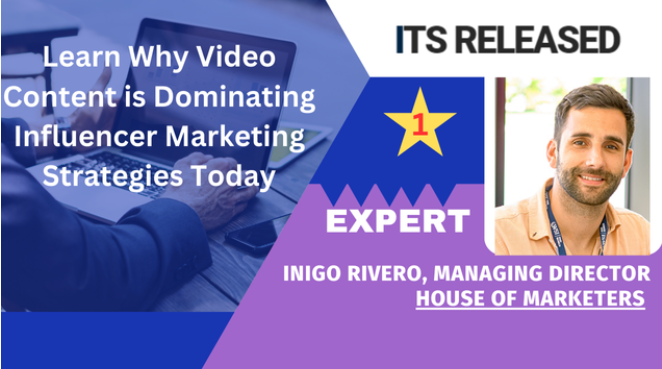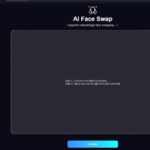Did you know that by 2024, online video will make up more than 80% of all internet traffic? This staggering statistic highlights the explosive growth of video content consumption in recent years. As people spend more time watching videos online, brands are increasingly turning to influencer marketing to reach their target audiences. Influencer marketing has become an important part of many marketing strategies, using prominent social media personalities to advertise goods and services. Out of all the content formats that influencers use, video has proven to be the most effective.
Video content is now at the forefront of influencer marketing strategies for several reasons. It offers a dynamic and engaging way to convey messages, showcase products, and connect with audiences on a personal level
Why Video is King in Influencer Marketing
Increased User Engagement
Video grabs attention and keeps viewers hooked far better than static content. Unlike text or images, videos combine visual and auditory elements, making them more engaging and memorable. Viewers are naturally drawn to motion and sound, which helps videos stand out in a crowded digital space. The storytelling potential of video further enhances its appeal, allowing influencers to create compelling narratives that resonate with their audiences.
Inigo Rivero, Managing Director of House Of Marketers says that video content has become a big deal in influencer marketing.I saw this happen up close. More and more brands think video is super important. Why? Because videos tell stories better than pictures or words alone. They mix exciting visuals, lively sounds, and real voices to grab your attention.
Moreover, the rise of interactive video formats, such as polls and quizzes, has completely changed how users engage with content. These interactive elements encourage viewers to participate actively, boosting engagement and fostering a deeper connection with the brand. This level of interaction is hard to achieve with traditional content formats, making video a powerful tool for influencers.
Enhanced Brand Awareness
Video content allows influencers to showcase products and brands in a more immersive way. Through videos, influencers can demonstrate how products work, highlight their benefits, and show them in action. This visual representation makes it easier for viewers to understand and remember the brand. Unlike text, which relies on the reader’s imagination, video provides a vivid and memorable experience.
The memorability factor of video content is significantly higher compared to text or static images. Studies have shown that people retain more information from videos than from reading. This increased retention translates into higher brand recall, ensuring that viewers remember the product or service long after they have watched the video.
Building Trust and Authenticity
Video allows influencers to connect with their audience on a more personal level, fostering trust and authenticity. Through vlogs, behind-the-scenes content, and live videos, influencers can share glimpses of their daily lives and personalities. This transparency helps build a genuine connection with viewers, who feel like they are getting to know the influencer on a personal level.
Inigo Rivero tells us Videos like vlogs or behind-the-scenes clips help influencers connect with their audience on a personal level. They make you feel like you know the influencer and can trust them. This connection makes people more loyal and engaged.
When influencers share their real experiences and opinions about a product, it comes across as more authentic and trustworthy. Viewers are more likely to trust recommendations from someone they feel they know and can relate to, making video an effective medium for building credibility.
Driving Action
Video content can be optimized with strong calls to action (CTAs), encouraging viewers to like, subscribe, or purchase. Influencers can seamlessly incorporate CTAs within their videos, guiding viewers toward the desired action. Whether it’s subscribing to a channel, visiting a website, or making a purchase, well-placed CTAs can significantly drive engagement and conversions.
Additionally, video testimonials and product demonstrations are highly effective in influencing buying decisions. Seeing a product in use and hearing genuine feedback from an influencer can persuade viewers to make a purchase. This visual and auditory reinforcement of the product’s value makes video a powerful tool for driving action.
Successful Video Influencer Marketing Examples
Case Study 1: HelloFresh with House of Marketers
A great example of this is HelloFresh’s campaign with House Of Marketers. HelloFresh, a global powerhouse in fresh food delivery services, faced the challenge of reducing their customer acquisition cost (CAC) on TikTok while maintaining a similar cost to their Facebook and Instagram campaigns. They also aimed to create content that would improve their CAC on those platforms. To address this, House Of Marketers partnered with entertaining food and lifestyle influencers on TikTok. By seamlessly integrating HelloFresh into their usual content, these influencers made the brand appear organic and engaging. The results were impressive: over 500 monthly sales were generated, HelloFresh enjoyed virality with approximately 5 million video views each month, and they achieved a 30% average CAC reduction across several markets compared to other social platforms. Nicolas Arias, Global Team Lead for Influencer Marketing at HelloFresh, praised House Of Marketers for their performance-driven, strategic approach. Thanks to this collaboration, HelloFresh successfully reduced its CAC by 30% across three markets.
Case Study 2: Azar with House of Marketers
Another example is the Azar campaign with House Of Marketers. As a mobile app that facilitates video chats between people, Azar connects millions of users worldwide in real-time. The challenge was to generate industry buzz and brand awareness among TikTok users in Europe. Our approach involved partnering with influencers who resonated with dating, astrology, or science themes. By collaborating with House Of Marketers, Azar found influencers that suited their brand and appealed to their target audience. The results were impressive: 2.7M+ video views across 21 videos, an average engagement rate of 4.52%, and over 6,000 comments. The House of Marketers team’s efficient approach helped Azar achieve success in their influencer marketing campaigns.
Developing a Video Influencer Marketing Strategy
1. Identify Your Target Audience and Campaign Goals
The first step in developing a video influencer marketing strategy is to identify your target audience and campaign goals. Understanding who you want to reach and what you want to achieve will guide your influencer selection and content creation process.
2. Find the Right Influencers Aligned with Your Brand and Niche
Next, find influencers who align with your brand and niche. Look for influencers who have a genuine interest in your industry and can authentically promote your products. The right influencer will have an engaged audience that matches your target demographic.
3. Brainstorm Engaging Video Content Ideas
Once you have identified your influencers, brainstorm engaging video content ideas. Consider tutorials, reviews, challenges, and behind-the-scenes content that will resonate with your audience. The goal is to create videos that are not only informative but also entertaining and shareable.
4. Set Clear KPIs to Track Campaign Success
Finally, set clear Key Performance Indicators (KPIs) to track the success of your campaign. These could include metrics such as views, engagement, website traffic, and sales. Monitoring these KPIs will help you understand the impact of your campaign and make any necessary adjustments.
Conclusion
Video content is undeniably dominating influencer marketing strategies today. Its ability to engage users, enhance brand awareness, build trust, and drive action makes it an indispensable tool for marketers. As video content continues to evolve with new trends like live video and AR/VR integration, its influence in the marketing world is only set to grow.
Inigo Rivero emphasizes that going forward, brands need to adapt to evolving video formats – such as short-form videos on platforms like TikTok, or increasingly popular livestreaming events. It’s all about understanding the platform dynamics and playing to the unique strengths of each to create the most engaging video content.
Brands that have not yet embraced video content in their influencer marketing strategies should consider doing so to stay competitive. By leveraging the power of video, brands can create more impactful and memorable campaigns that resonate with their audiences and drive meaningful results.


